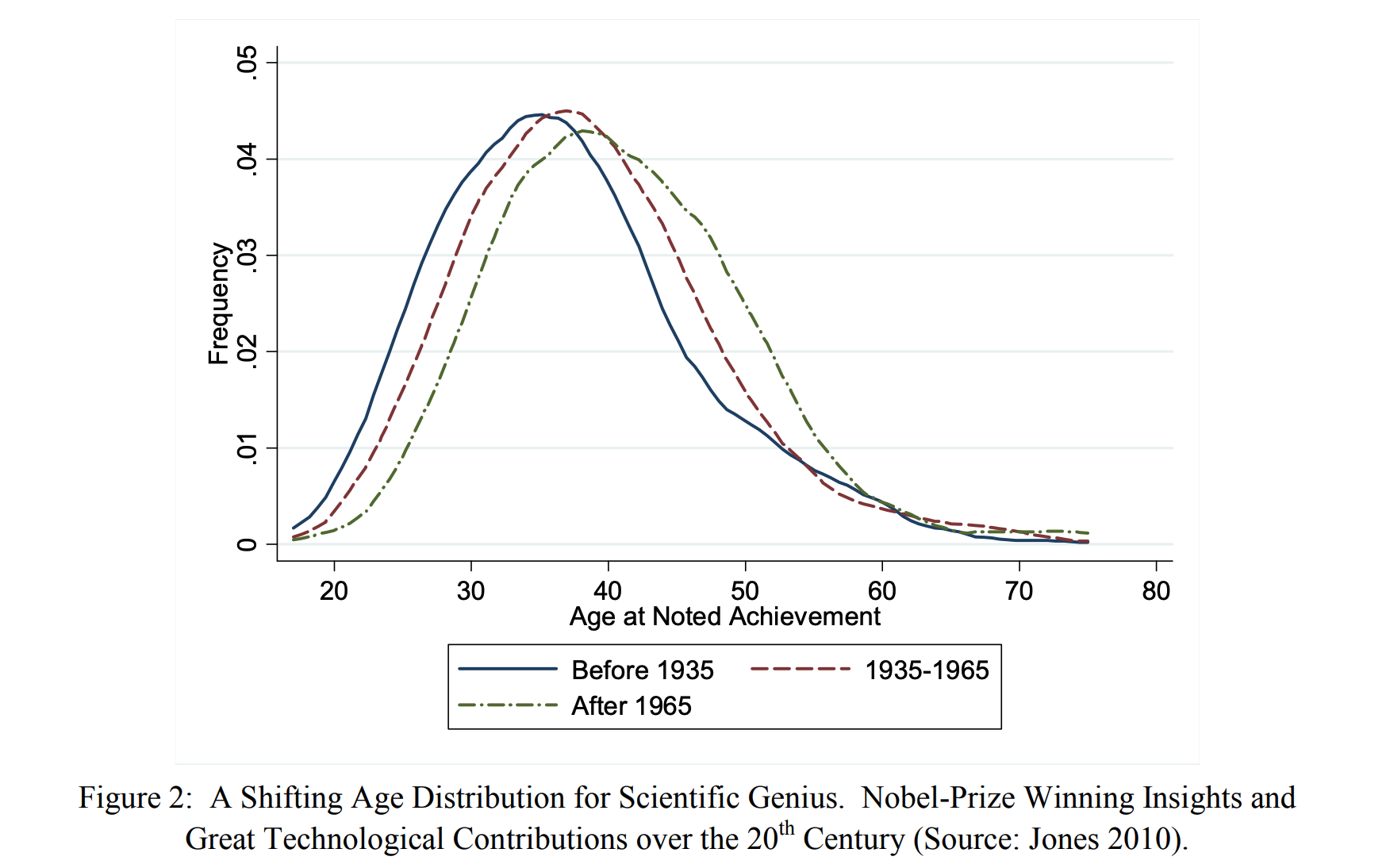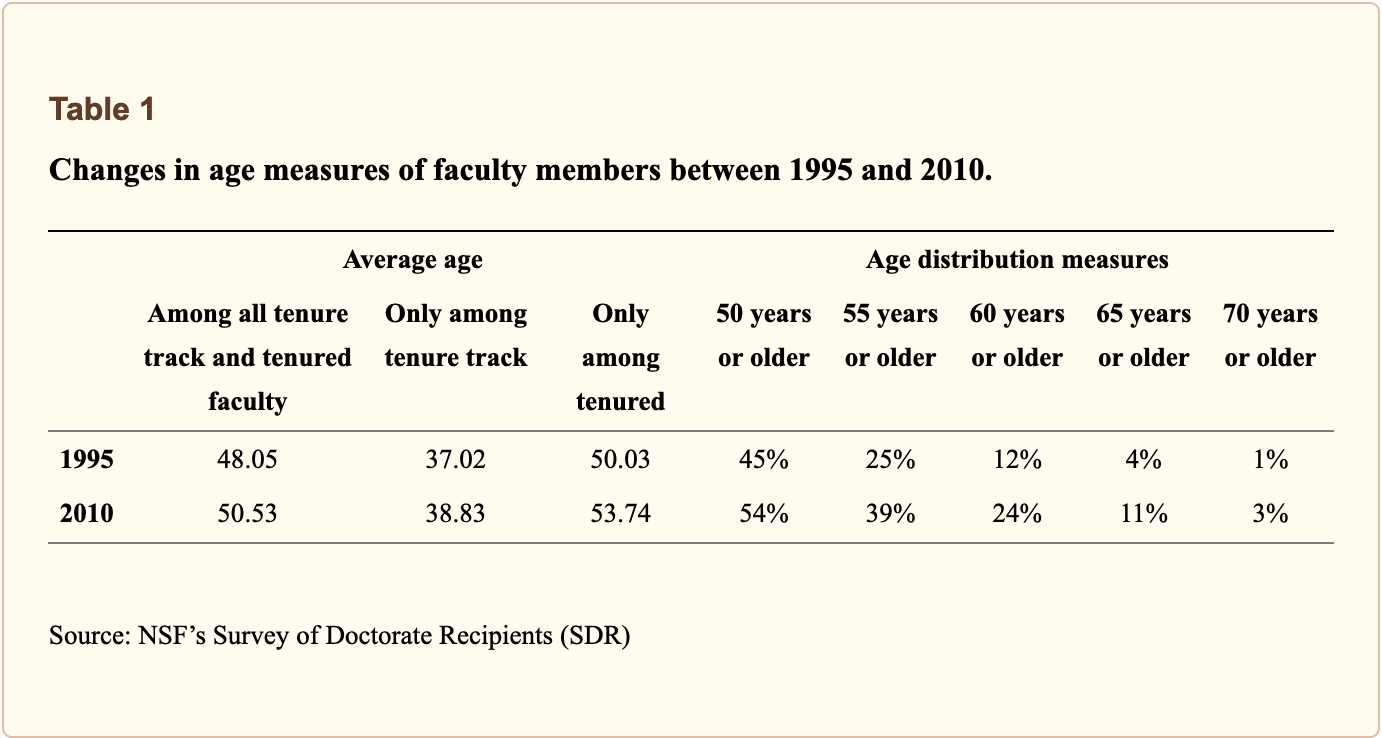Age
Age of achievement, discovery, agency, and impact is increasing across industries and fields. Watson was 25 and Crick was 36 when they discovered the structure of DNA. More than a dozen of the signers of the American declaration of independence were 35 or younger and the average age was 44. The majority of the people at Xerox PARC at its zenith were under 30. The Macintosh team’s average age was 21.
Even accounting for life expectancy (which has now started to stagnate) and median age increasing, the age of first achievement is increasing too. The burden of knowledge is routinely cited in science, but this seems uniform everywhere:
- The US Congress is getting older: “The average age of Members of the House at the beginning of the 117th Congress was 58.4 years; of Senators, 64.3 years.”
- The age at hire for CEOs and CFOs has steadily increased since 2005.
- Nobel prize winners are getting older: “The rate of the prizewinners selected at the age of 61 and more years increases from the 23% at 1901-1925 to 53.1% at 1975-2003, whereas the rate of the winners selected before the age of 40 years decreases from 19% to 2.7% during the same period.”

- “The average (College) president is age 62, a full decade older than the average age 30 years ago.” See also: Demographic breakdown
- “It is also noted that the average age of the U.S. science workforce has been increasing over the past two decades. This growing pattern has also been observed among faculty members in different academic fields, and the median age of professors has now surpassed all other occupational groups.”

- “It is also noted that the average age of the U.S. science workforce has been increasing over the past two decades. This growing pattern has also been observed among faculty members in different academic fields, and the median age of professors has now surpassed all other occupational groups.”
- “The average age of an investigator at the National Institutes of Health (NIH) rose from 39 to 51 between 1980 and 2008.”
- NIH has an increase in the age of principal investigators: “PIs with PhDs at the time of first NCI R01 award increased from an average of 36.2 years in FY 1990 to 44.9 years in FY 2016. Likewise, the median age increased from 36 to 43 years (Supplemental Figure 3). The increase in age at first R01 began to stabilize in the early 2000s, paralleling the stabilization of time from degree to first R01 award, as noted above.” See also: Future of fundamental discovery in US biomedical research.

- NIH has an increase in the age of principal investigators: “PIs with PhDs at the time of first NCI R01 award increased from an average of 36.2 years in FY 1990 to 44.9 years in FY 2016. Likewise, the median age increased from 36 to 43 years (Supplemental Figure 3). The increase in age at first R01 began to stabilize in the early 2000s, paralleling the stabilization of time from degree to first R01 award, as noted above.” See also: Future of fundamental discovery in US biomedical research.
- The arts are burdened by this too: “In the past 20 years—and particularly the last 10 to 15—the average age of actors appearing toward the top of the bill in film and TV projects has risen significantly. Whereas the star, or the top two or three stars, of the typical movie or TV series released in the closing decades of the 20th century was typically in their late 30s—several years older than the median age of the United States population at the time—today’s average actor age has reached the mid-40s and is steadily climbing toward 50.”
It isn’t necessarily bad that the average age is increasing. But, structurally there seems to be a demographic change on which cohort has agency and influence. Please email if you have any suggestions or comments on the above.